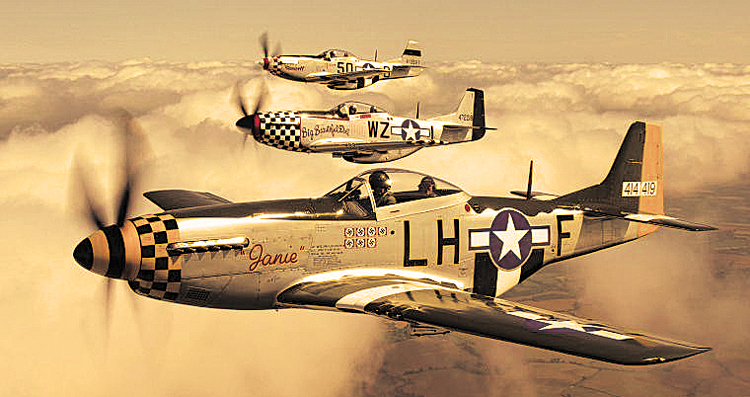INDIAN ARMED FORCES CHIEFS ON OUR RELENTLESS AND FOCUSED PUBLISHING EFFORTS

The insightful articles, inspiring narrations and analytical perspectives presented by the Editorial Team, establish an alluring connect with the reader. My compliments and best wishes to SP Guide Publications.

"Over the past 60 years, the growth of SP Guide Publications has mirrored the rising stature of Indian Navy. Its well-researched and informative magazines on Defence and Aerospace sector have served to shape an educated opinion of our military personnel, policy makers and the public alike. I wish SP's Publication team continued success, fair winds and following seas in all future endeavour!"

Since, its inception in 1964, SP Guide Publications has consistently demonstrated commitment to high-quality journalism in the aerospace and defence sectors, earning a well-deserved reputation as Asia's largest media house in this domain. I wish SP Guide Publications continued success in its pursuit of excellence.
The Magnificent Mustang P-51
By the time Mustang production ceased in 1946, 15,469 aircraft had been built. It last saw military service with the Dominican Air Force and was retired in 1984

The P-51 Mustang was an American long-range fighter aircraft used during the Second World War and the Korean War, and other conflicts. This piston-engine plane was originally designed and produced by North American Aviation in response to an urgent request by the British government. While the British eventually ordered 620 Mustangs, thousands more P-51s in eight or more variants were built for the United States Army Air Force (USAAF) and other users. American P-51s were utilised mainly as dive bombers, bomber escorts, ground attackers, interceptors and for photo reconnaissance missions, and destroyed 4,950 Luftwaffe aircraft with a kill ratio of 11:1. This made the Mustang the highest scoring US fighter in the European Theatre and a major factor in the Allied victory over Germany.
When the British first placed the order for the new aircraft they stipulated that the prototype must be rolled out within 120 days of the go ahead. The design team led by the famous chief designer of North American Aviation, “Dutch” Kindelberger, soon went to work. The P-51 prototype was ready in 102 days on September 9, 1940 and it first flew on October 26, 1940. It entered service with the Royal Air Force in January 1942 and was an immediate success, outperforming even the legendary Spitfire.
The Mustang had graceful lines with a long slim nose, teardrop canopy and unique belly air scoop. With its low-drag laminar-flow wing, it had exceptional speed and range. Its maximum speed was 630 kmph and combat range of 2,200 km with drop tanks. It was initially restricted to operations below 15,000 feet because its Allison V-1710 engine lacked an efficient high-altitude supercharger. However, within months the P-51 was reequipped with Rolls-Royce Merlin 1,695-hp V-12 engine that gave it outstanding high-altitude performance and increased its maximum speed by 50 kmph. The plane was armed with six Browning machine guns with 1,840 rounds. It was a capable fighter-bomber and could carry 1,000 pounds of bombs and rockets.
Production of the Mustang proceeded apace with the P-51D being the most-built variant. The first American P-51 arrived in Europe towards the end of 1943. When fitted with drop tanks, they had an operational range of over 2,500 km and they soon began mounting long-range bomber escort missions over Germany. The P-51’s superiority over Germany’s premier fighters, the Messerschmitt Bf 109 and the Focke-Wulf Fw 190, was marked above 20,000 feet. It quickly established its ascendancy over the Luftwaffe. In fact it conquered every German plane, even the sleek, twin-jet Messerschmitt 262.
Before the P-51 arrived, unescorted daylight bombing raids into Germany were disastrous for the USAAF. The losses were so high that daylight raids had to be suspended for some time. But now the USAAF had a high-performance fighter that could escort its massive heavy-bomber formations to Berlin and back. This greatly reduced the unacceptable losses and permitted Germany to be placed under round-the-clock aerial bombardment. In fact, after the P-51 entered the arena, the Allies were able to establish air supremacy and drove the Luftwaffe from the European skies. Although other US fighters also helped, the P-51 could penetrate deeper into German airspace and was superior in air combat. When fitted with external tanks, the Mustang had enough range to stay with the Boeing B-17 and B-24 bomber formations till their designated targets and then provide them effective fighter protection on the way back. By the end of 1944, 14 of the 15 fighter squadrons of the US Eighth Air Force were equipped with Mustangs. They therefore played a starring role in the eventual defeat of the Luftwaffe.
By late 1944, the P-51s were being produced in sufficient numbers to be deployed in the Pacific and South East Theatres too. Their primary role was escorting the new, highaltitude, long-range Boeing B-29 Superfortress heavy bombers on their way to Japan and back. By the time Mustang production ceased in 1946, 15,469 aircraft had been built. It last saw military service with the Dominican Air Force and was retired in 1984. However, even today, around 100 Mustangs are airworthy.
The P-51 Mustang was the best piston-engine fighter aircraft of the Second World War. According to a 1944 report of the Truman Senate War Investigating Committee, it was then “the most aerodynamically perfect plane in existence.” And when Hermann Göring, the German military leader and a powerful figure in the Nazi Party, learnt that long-range P-51Ds were beginning to escort US bombers on bombing raids over Berlin, he reportedly told his staff, “The war is over.”





